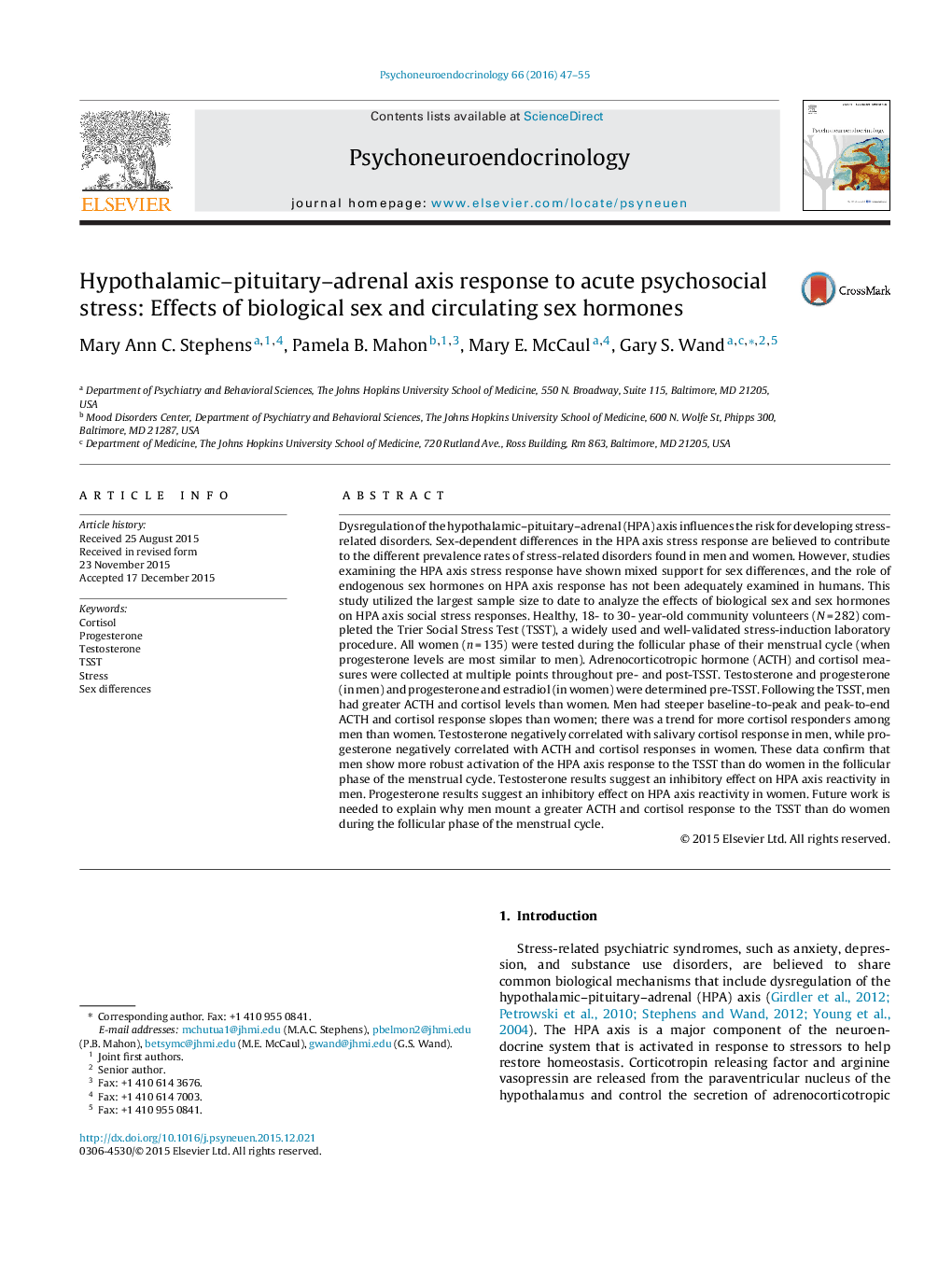| کد مقاله | کد نشریه | سال انتشار | مقاله انگلیسی | نسخه تمام متن |
|---|---|---|---|---|
| 336310 | 547112 | 2016 | 9 صفحه PDF | دانلود رایگان |
• Healthy young men and women (in the follicular phase of the menstrual cycle) completed the Trier Social Stress Test.
• Post-stress hypothalamic–pituitary–adrenal (HPA) axis hormone responses were greater in men than women.
• Pre-stress testosterone levels were negatively associated with post-stress salivary cortisol response in men.
• Pre-stress progesterone levels were negatively associated with post-stress ACTH and serum cortisol responses in women.
• Pre-stress progesterone in men and estradiol in women were not associated with post-stress HPA axis response.
Dysregulation of the hypothalamic–pituitary–adrenal (HPA) axis influences the risk for developing stress-related disorders. Sex-dependent differences in the HPA axis stress response are believed to contribute to the different prevalence rates of stress-related disorders found in men and women. However, studies examining the HPA axis stress response have shown mixed support for sex differences, and the role of endogenous sex hormones on HPA axis response has not been adequately examined in humans. This study utilized the largest sample size to date to analyze the effects of biological sex and sex hormones on HPA axis social stress responses. Healthy, 18- to 30- year-old community volunteers (N = 282) completed the Trier Social Stress Test (TSST), a widely used and well-validated stress-induction laboratory procedure. All women (n = 135) were tested during the follicular phase of their menstrual cycle (when progesterone levels are most similar to men). Adrenocorticotropic hormone (ACTH) and cortisol measures were collected at multiple points throughout pre- and post-TSST. Testosterone and progesterone (in men) and progesterone and estradiol (in women) were determined pre-TSST. Following the TSST, men had greater ACTH and cortisol levels than women. Men had steeper baseline-to-peak and peak-to-end ACTH and cortisol response slopes than women; there was a trend for more cortisol responders among men than women. Testosterone negatively correlated with salivary cortisol response in men, while progesterone negatively correlated with ACTH and cortisol responses in women. These data confirm that men show more robust activation of the HPA axis response to the TSST than do women in the follicular phase of the menstrual cycle. Testosterone results suggest an inhibitory effect on HPA axis reactivity in men. Progesterone results suggest an inhibitory effect on HPA axis reactivity in women. Future work is needed to explain why men mount a greater ACTH and cortisol response to the TSST than do women during the follicular phase of the menstrual cycle.
Journal: Psychoneuroendocrinology - Volume 66, April 2016, Pages 47–55
